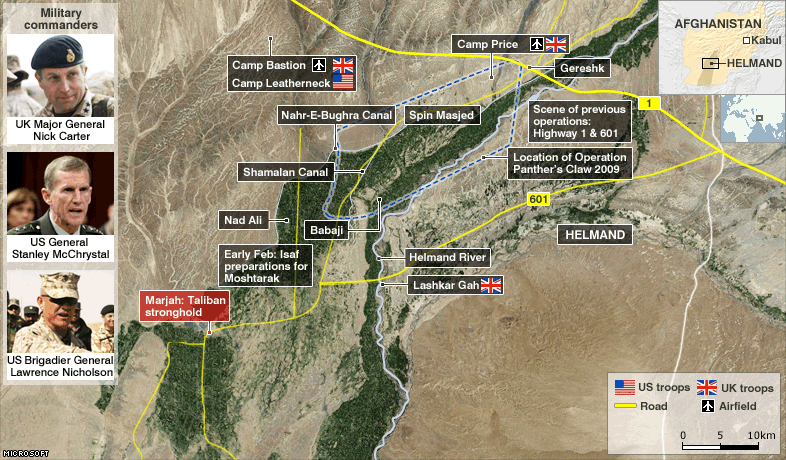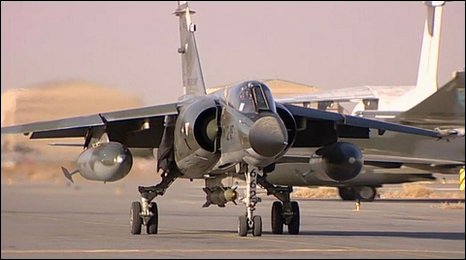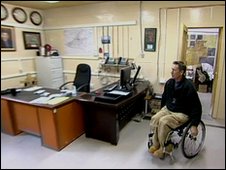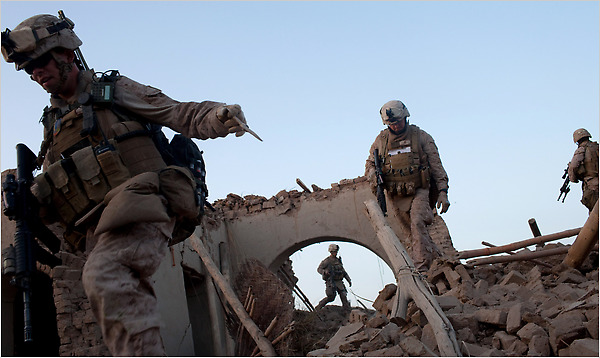Yrys
Army.ca Veteran
- Reaction score
- 11
- Points
- 430
Operation Moshtarak: Assault in Helmand province

US and Afghan forces have begun a major offensive in Helmand province. British
forces are also preparing to play a key role. BBC News looks at the offensive and
its ultimate target.
OPERATION MOSHTARAK
Operation Moshtarak, which means "together" in the Dari language, involves more
than 15,000 Nato and Afghan troops.
The joint offensive in central Helmand involves American, Canadian, British,
Danish and Estonian forces.
-Nato says Afghan forces have been closely involved in planning, and are expected to
play a central role in the operation.
-Led by the US Marine Corps, it is the first major attack since the US sent 30,000 extra
troops to the country.
-The Marines are leading the main thrust of the offensive, focusing on Marjah,
an insurgent and drug-smuggling stronghold, south of Helmand's regional capital,
Lashkar Gah.
-In support, British forces are attempting to secure nearby Nad Ali district, to the north.
The idea is to clear the area of insurgents and allow forces to work with local institutions
to bolster reconstruction and provide support for the rule of law.
-The difference this time is the nature of the publicity surrounding the push. Troops have
been working with tribal elders to prepare the way.
-Analysts say it epitomises the new "counter-insurgency" approach of US and Nato
commander Gen Stanley McChrystal.
-Local people were warned about what was to come so they could protect themselves
and stay away from fighting.
-Thousands of Afghan civilians were reported to have fled before the operation began.
Troops are operating from Camp Bastion, Camp Leatherneck and also from Kandahar bases.
Preparations in the central Helmand area have been going on for weeks. Before the
offensive, British forces carried out a "softening up" exercise in Helmand province.
THE TARGET: MARJAH
-The US military has for some time signalled that it plans to take on the Taliban
in the town and district of Marjah. It has been targeted before.
-It lies in the heart of the poppy cultivation belt of southern Afghanistan - the centre
of opium production.
-It is known as the "green zone" of Helmand - a strip of irrigated land along the
main river. It is also known for the volatile insurgency that has bred in the district.
-In the 1950s, US development workers built the town to populate the arid desert
of southern Afghanistan. They helped to irrigate the area by constructing canals.
-But the district has more recently become a haven for hundreds of Taliban fighters
and is considered an assembly centre for roadside bombs.
-Dubbed a "festering sore" by a senior US Marine commander, Marjah has for a while
been regarded as one of the last main insurgent-controlled areas in southern Helmand.
-Before the offensive, US officials estimated there were between 400 and 1,000 Taliban
- including some foreign fighters - in an area with a civilian population put at about
125,000.
-However, not all the Taliban are believed to be diehards, and those paid to fight may
just prefer to melt away in the face of superior force, military officials say.
-Marjah is about 40km (25 miles) from the strategically significant provincial capital
Lashkar Gah, and is one of the largest population centres in Helmand.

US and Afghan forces have begun a major offensive in Helmand province. British
forces are also preparing to play a key role. BBC News looks at the offensive and
its ultimate target.
OPERATION MOSHTARAK
Operation Moshtarak, which means "together" in the Dari language, involves more
than 15,000 Nato and Afghan troops.
The joint offensive in central Helmand involves American, Canadian, British,
Danish and Estonian forces.
-Nato says Afghan forces have been closely involved in planning, and are expected to
play a central role in the operation.
-Led by the US Marine Corps, it is the first major attack since the US sent 30,000 extra
troops to the country.
-The Marines are leading the main thrust of the offensive, focusing on Marjah,
an insurgent and drug-smuggling stronghold, south of Helmand's regional capital,
Lashkar Gah.
-In support, British forces are attempting to secure nearby Nad Ali district, to the north.
The idea is to clear the area of insurgents and allow forces to work with local institutions
to bolster reconstruction and provide support for the rule of law.
-The difference this time is the nature of the publicity surrounding the push. Troops have
been working with tribal elders to prepare the way.
-Analysts say it epitomises the new "counter-insurgency" approach of US and Nato
commander Gen Stanley McChrystal.
-Local people were warned about what was to come so they could protect themselves
and stay away from fighting.
-Thousands of Afghan civilians were reported to have fled before the operation began.
Troops are operating from Camp Bastion, Camp Leatherneck and also from Kandahar bases.
Preparations in the central Helmand area have been going on for weeks. Before the
offensive, British forces carried out a "softening up" exercise in Helmand province.
THE TARGET: MARJAH
-The US military has for some time signalled that it plans to take on the Taliban
in the town and district of Marjah. It has been targeted before.
-It lies in the heart of the poppy cultivation belt of southern Afghanistan - the centre
of opium production.
-It is known as the "green zone" of Helmand - a strip of irrigated land along the
main river. It is also known for the volatile insurgency that has bred in the district.
-In the 1950s, US development workers built the town to populate the arid desert
of southern Afghanistan. They helped to irrigate the area by constructing canals.
-But the district has more recently become a haven for hundreds of Taliban fighters
and is considered an assembly centre for roadside bombs.
-Dubbed a "festering sore" by a senior US Marine commander, Marjah has for a while
been regarded as one of the last main insurgent-controlled areas in southern Helmand.
-Before the offensive, US officials estimated there were between 400 and 1,000 Taliban
- including some foreign fighters - in an area with a civilian population put at about
125,000.
-However, not all the Taliban are believed to be diehards, and those paid to fight may
just prefer to melt away in the face of superior force, military officials say.
-Marjah is about 40km (25 miles) from the strategically significant provincial capital
Lashkar Gah, and is one of the largest population centres in Helmand.





